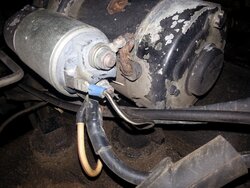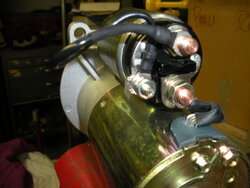So, I got a free Yanmar 240d (circa 1978) from my boss. Derelict in his yard for 5-6 years. I changed all the filters and fluids and got a new battery.
Wouldn't turn over. Started checking out the electrical system and eventually by chance was poking this braided wire from the starter and the the tractor turned over and started right up.
Well over the past year of mowing and plowing snow like champ its become a constant PIA as I have to keep fiddling with the wire (poking it with wooden sticks) to get a decent enough connection to get the starter to kick on.
i have a soldering kit and was wondering if I could just go and slab some flux on the rusted wire to kind of ...re-invigorate it?
I know very little about tractors and electrical work but would like to avoid replacing the starter when it appears to just be this single little wire that is the issue.
Wouldn't turn over. Started checking out the electrical system and eventually by chance was poking this braided wire from the starter and the the tractor turned over and started right up.
Well over the past year of mowing and plowing snow like champ its become a constant PIA as I have to keep fiddling with the wire (poking it with wooden sticks) to get a decent enough connection to get the starter to kick on.
i have a soldering kit and was wondering if I could just go and slab some flux on the rusted wire to kind of ...re-invigorate it?
I know very little about tractors and electrical work but would like to avoid replacing the starter when it appears to just be this single little wire that is the issue.



